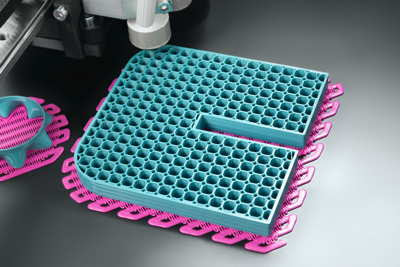3D Printing Materials: The Power Of Revolutionizing Manufacturing
 |
| 3D Printing Materials |
The world of manufacturing has
undergone a remarkable transformation with the advent of 3D printing. One of
the key factors driving this revolution is the development and utilization of
advanced 3D Printing Materials.
These materials have the power to reshape the manufacturing landscape, offering
unique capabilities and unprecedented design freedom. Traditional manufacturing
processes often rely on subtractive techniques, such as cutting and drilling,
or formative processes like molding and casting. These methods are limited by
the properties of the materials used, making it challenging to produce complex
geometries and intricate designs. However, 3D Printing Materials enable the
creation of highly complex structures with ease.
One of the most significant
advantages of 3D Printing Materials
is their versatility. Unlike traditional manufacturing materials, which are
often limited to specific applications, 3D printing materials come in a wide
range of types, each with unique properties. From plastics and metals to
ceramics and composites, there is a material suitable for almost every
application.
Plastics, for instance, are
commonly used in 3D printing due to their affordability and ease of use. They
can be utilized to produce a variety of consumer products, prototypes, and even
functional parts. ABS (Acrylonitrile Butadiene Styrene) and PLA (Polylactic
Acid) are popular choices, offering good strength and stability. On the other
hand, metals like titanium, aluminum, and stainless steel can be 3D printed,
unlocking new possibilities in the aerospace, automotive, and medical
industries. Metal 3D printing allows for the creation of lightweight yet strong
components, optimizing performance and reducing material waste.
Ceramic 3D Printing Materials have also gained traction, particularly in
the field of biomedical engineering. Researchers are exploring the use of
biocompatible ceramics to produce customized implants, revolutionizing the
medical industry and improving patient outcomes. Furthermore, the emergence of
composite materials has pushed the boundaries of 3D printing even further.
Composites combine the properties of different materials, such as strength,
flexibility, and conductivity, into a single structure. Carbon fiber-reinforced
polymers, for example, offer exceptional strength-to-weight ratios, making them
ideal for applications requiring high-performance materials.
In addition to material variety, 3D
printing materials offer remarkable design freedom. Traditional manufacturing
often involves the assembly of multiple components, leading to limitations in
design complexity. However, with 3D printing, intricate geometries and internal
structures can be realized in a single manufacturing step. This not only saves
time but also reduces costs and material waste. Moreover, 3D Printing Materials enable the production of highly customized
and personalized products. From prosthetics tailored to an individual's anatomy
to unique consumer goods, the ability to create one-off designs quickly and
efficiently is a game-changer for industries across the board.
As 3D printing technology continues
to evolve, we can expect even more innovative materials to emerge. Researchers
are actively exploring materials with enhanced properties, such as increased
durability, improved heat resistance, and conductivity. These advancements will
further expand the potential of 3D printing in industries like electronics,
energy, and construction.



Comments
Post a Comment